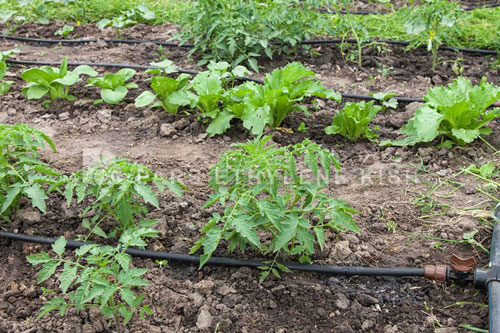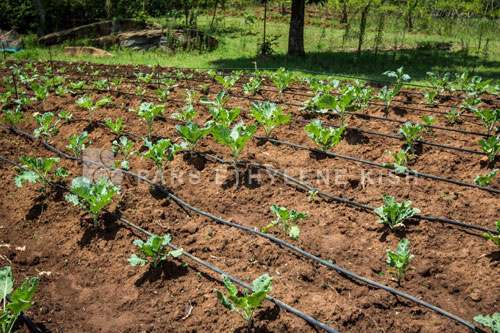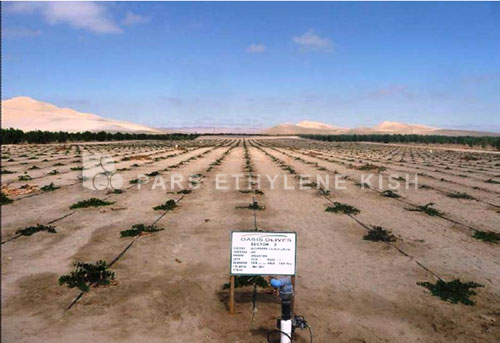
Drip Irrigation and Its Advantages and Disadvantages
In drip irrigation, water is distributed through a low-pressure pipe network in a predetermined pattern. The means of releasing water into the soil is called a "dripper". Drippers reduce the pipe network pressure through a narrow nozzle or a long flow path, and in this way, the discharge flow is reduced to about liters per hour. After leaving the dripper, the water flows in the soil profile by capillarity and gravity forces, so the surface wetted by each dripper is limited by the limiting factors of water horizontal flow. In drip systems, one-day irrigation intervale, and even less if needed is possible. For trees and vines, which are permanent plants with a large distance from each other, the drippers are in the form of separate units, and using an appendage are connected to the conventional water transmission line to the second pipe of the dripper, the hose of the sub-pipes, or the sub-pipes. Some drippers are tubes like spaghetti and have several outlets. This is to increase the wetted surface, with minimal increase in cost. For less permanent row crops, such as tomatoes, sugarcane, and strawberries, sub-pipes, and drippers are made together as a detachable unit, which either has holes 9 to 36 inches apart, such as a two-chamber pipe, or they have porous walls from which water seeps out. In both types of drip systems, the sub pipes are connected to the water transmission line known as the manifold.
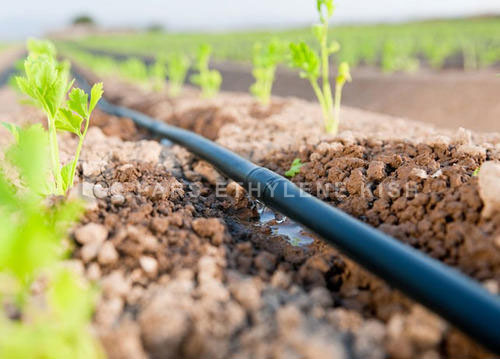
Advantages of Drip Irrigation:
Drip irrigation is the easiest way to water any plant such as trees and vines, and eliminates the lack of soil moisture before the appearance of higher suction, the effect of water consumption by the plant through evaporation and transpiration. A drip irrigation system has unique agronomic, agrotechnical, and economic advantages due to the effective use of water and labor.
Saving Water and Costs:
Drip irrigation reduces operating costs, which is a fundamental issue in this new method. Drip systems require less water than other common irrigation systems. For example, in orchards of young trees, drip irrigation uses only half of the water needed for sprinkler or surface irrigation. As trees grow older, water savings using drip systems decrease, however, due to the scarcity and high cost of water, effective drip irrigation is still important to many gardeners. The labor cost for irrigation can be reduced because, in the drip system, it is enough to the water distribution and start the system. These settings are done by automatic devices that do not require many workers.
Easier Agricultural Operations:
Since most of the soil surface is never wetted by drip irrigation, weed growth is reduced, and as a result, labor and chemical costs for weed control are reduced. Moreover, since the soil gets wet less by drip irrigation, other agricultural operations in gardens can be continued without interruption. For example, in row plants, the furrows that workers walk on remain relatively dry and firm. Fertilizers can be injected into the irrigation water, which does not require labor to spread them on the ground. To this end, there are very soluble fertilizers on the market, and new types of them have been developed for fertilization through the drip system. Due to more control over the place and time of spreading fertilizer using the drip system, the efficiency of fertilizer spraying has increased.
Use of Salt Water:
Frequent watering keeps the soil moisture at a level where it does not fluctuate between very dry and very wet states, and most parts of the soil have enough air. Keeping the soil wet between irrigations causes the salts in the solution to be more diluted. For this reason, in the drip system, water with more salinity can be used than other irrigation methods. Used in rocky soils and steep slopes: drip irrigation systems can be designed in such a way that in every topography can be used effectively. In rocky lands, even if the distance between the trees is irregular, and their sizes are different, drip irrigation can be used effectively because the water is distributed very close to each tree.
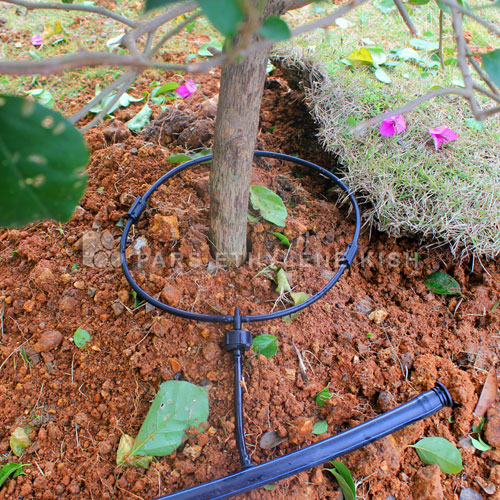
Disadvantages Of Drip Irrigation:
Relatively high cost, clogging of drippers, creation of local salinity, and irregular and patchy distribution of soil moisture can be counted among the main disadvantages of drip irrigation systems.
Clogging:
Because the outlets of the drippers are very small, mineral or organic particles cause clogging. Clogging leads to a decrease in discharge flow, non-uniformity of water distribution, and as a result, damage to the plant. Sometimes, there are particles in the irrigation water that are not filtered before entering the pipe network. In other cases, particles enter the water inside the pipeline or by evaporation of water from the orifice of the drippers, between irrigations. Iron oxide, calcium carbonate, algae remain, and microbes are formed in some irrigation systems. Chemical treatment of water leads to the elimination or reduction of the drippers' clogging.
Uniformity:
Most drippers in drip systems have a low service pressure (3 to 20 psi). If the field has a steep slope, the dripper discharge during irrigation will change to about the predicted 50%, and after closing the water, the lower drippers will continue to discharge water. Some plants receive more water, and some receive less.
Soil Conditions:
Some soils do not have enough final infiltration speed to receive the discharge of drippers which leads to runoff or waterlogging conditions. Given a discharge rate of 1 gallon per hour, the soil must have a final infiltration rate of 0.5 inches per hour so that the diameter of the wetted circle around the dripper does not exceed 2 feet. Usually, sandy soils, especially with little horizontal layering, are very suitable for drip irrigation. This type of layering is useful for drip irrigation, because it increases the lateral movement of water, and moistens a larger part of the soil. Experience has shown that medium-textured soils are suitable for drip irrigation, but some fine-textured soils have produced runoff.
Salt Accumulation:
Salts accumulate on the soil surface, and cause a potential risk for the plant, as light rains transmit minerals to the root of the plant. Therefore, when it rains after the salt accumulation, the irrigation should continue as planned, to enter the soil as much as 5 cm, and remove the salts from the root of the plant.
While drip irrigation, salts accumulate under the soil and around its wet part by the dripper. The drying of the soil between irrigations causes the reverse movement of soil water and the transfer of salt from around the wetted area towards the dripper; the movement of water should always be away from the dripper, to prevent damage caused by salt.
Hazards:
If uncontrolled events stop irrigation, the plant is quickly damaged, because the ability of the roots to take up water and nutrients is limited to a relatively small part of the wetted soil. Rodents chew polyethylene sub-pipes; to solve this problem and control rodents, you should use PVC sub-pipes.
As a result of breaking the main water transmission pipeline, or malfunctioning of the filtration system, some waste materials enter the water. After such incidents, a large number of drippers suffer from clogging, which must be repaired or replaced.
